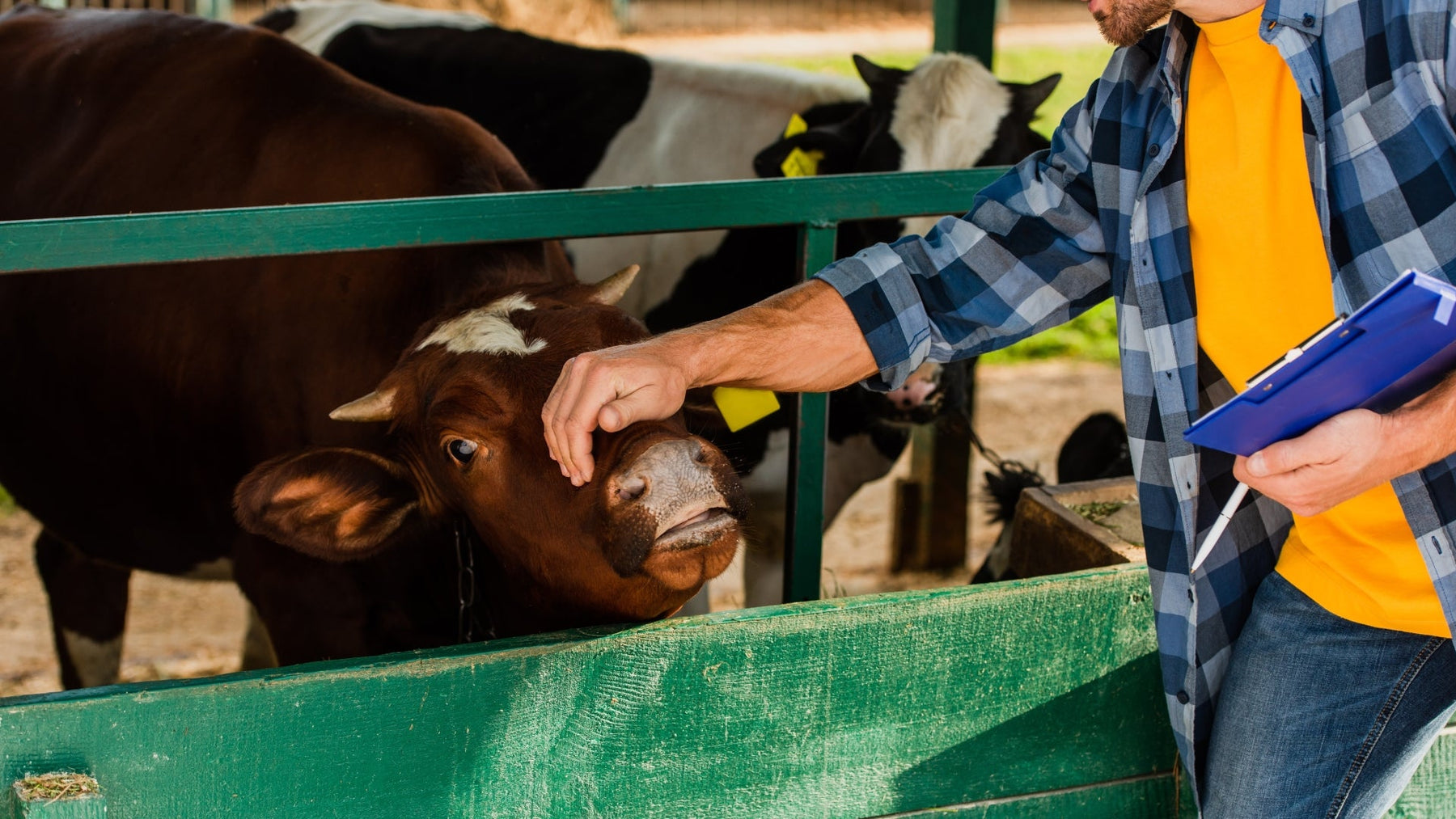
Cattle Weighing Scales vs Traditional Methods: ROI Guide 2025
Accuracy is crucial in livestock management. From optimizing feed programs to making informed breeding decisions and maximizing market value, accurate weight measurement of cattle is a cornerstone of success. For generations, farmers have relied on traditional methods, but the advent of modern cattle weighing scales has revolutionized this crucial aspect of farm management.
This article explores the stark differences between modern livestock scales and traditional weighing techniques, focusing on their impact on accuracy, efficiency, and ultimately, your farm's return on investment (ROI).
The Evolution of Cattle Weight Management
The ability to consistently and accurately monitor cattle weight is a reliable indicator of herd health and performance. Historically, methods like visual estimation or rudimentary manual scales were the norm.
While these served their purpose, they often lacked the precision needed for truly data-driven decision-up-to-date decision-making. Today, advanced cattle weight scales offer a level of accuracy and efficiency that was once unimaginable, transforming how farmers manage their livestock.
The Limitations of Traditional Weighing Methods
To fully appreciate the advantages of modern scales, we first need to examine the limitations of conventional methods:
1. Inaccurate Visual Estimation
Relying on a farmer's eye to estimate an animal's weight is highly subjective and prone to significant error. This can lead to:
-
Suboptimal Feeding: Under or overfeeding based on inaccurate estimates can negatively impact growth rates and feed conversion efficiency.
-
Missed Health Issues: Subtle weight loss, often an early indicator of illness, can go unnoticed.
-
Poor Market Timing: Selling animals at incorrect weights can result in financial penalties or missed opportunities for optimal pricing.
2. Labor-Intensive Manual Scales
Older, manual scales, while offering some improvement over visual estimation, still present challenges:
-
Time-Consuming: The process of corralling, weighing, and manually recording each animal's weight is incredibly labor-intensive.
-
Increased Stress on Animals: Frequent, stressful handling can negatively impact animal welfare and performance.
-
Human Error: Manual data recording is susceptible to mistakes, leading to unreliable records.
The Unmatched Advantages of Modern Cattle Weighing Scales
Modern livestock scales offer a suite of benefits that directly address the shortcomings of traditional methods, leading to tangible improvements in farm operations.
1. Superior Accuracy and Precision
Today's cattle weighing scales, particularly digital and electronic models, provide highly accurate and consistent measurements.
-
Data-Driven Decisions: Precise weight data enables farmers to accurately assess growth rates, calculate feed conversion ratios, and tailor nutritional programs for individual animals or groups.
-
Early Disease Detection: Sudden or consistent weight loss can be immediately identified, allowing for prompt veterinary intervention and preventing the spread of illness within the herd.
-
Optimized Breeding Programs: Knowing the optimal weight for breeding allows farmers to make informed decisions that improve fertility and offspring quality.
-
Fairer Transactions: Accurate weights ensure fair pricing when buying or selling livestock, building trust with buyers.
2. Enhanced Efficiency and Reduced Labor
The automation and design of modern scales significantly streamline the weighing process.
-
Faster Weighing: Digital readouts and integrated data systems drastically reduce the time spent on weighing.
-
Reduced Stress: Many modern scales are designed for low-stress animal handling, minimizing discomfort and improving animal welfare.
-
Automated Data Collection: Integration with EID readers and farm management software allows for seamless data capture, eliminating manual recording errors and providing valuable historical data for analysis. This streamlines record management and facilitates thorough performance analysis.
3. Significant Return on Investment (ROI)
While the initial investment in modern cattle weighing scales might seem higher than traditional methods, the long-term ROI is substantial.
-
Maximized Profitability: By precisely tracking weight gain, farmers can determine the optimal time to sell or breed animals, ensuring they capitalize on peak market conditions and avoid penalties for incorrect weights.
-
Reduced Feed Costs: Accurate feeding based on actual weight leads to less wasted feed and improved feed conversion rates, directly impacting the bottom line.
-
Improved Animal Health and Lower Mortality: Early detection and treatment of illnesses due to consistent weight monitoring can significantly reduce veterinary costs and livestock mortality rates.
-
Better Genetic Selection: Identifying animals with superior growth rates helps in selecting the best breeding stock, leading to long-term herd improvement and increased productivity.
-
Compliance and Traceability: Accurate weight records are often essential for meeting regulatory requirements related to animal welfare, traceability, and food safety, preventing potential fines or complications.
Conclusion
Modern cattle scales represent a major progression in livestock management, moving beyond outdated methods. The unparalleled accuracy, improved efficiency, and substantial return on investment offered by these advanced systems make them an indispensable tool for any modern farmer. By embracing this technology, livestock producers can make more informed decisions, enhance animal welfare, reduce operational costs, and ultimately, cultivate a more profitable and sustainable farming operation.
Ready to revolutionize your livestock management? Visit Liberty Scale today and explore our range of cutting-edge cattle weighing scales designed for accuracy, efficiency, and maximum ROI. Contact us to learn more!
FAQs
How often should I weigh my cattle?
The frequency of weighing depends on your farming goals and the type of cattle. For dairy cattle, daily or twice-daily weighing might be feasible with automatic scales. For beef cattle, weighing at birth, weaning, and then monthly or bi-monthly can provide valuable data for growth tracking and management.
What types of cattle weighing scales are available?
Common types include platform scales (where the animal stands on a flat platform), alleyway scales (integrated into a working chute), and weigh bars (placed under a cattle crush). Portable options are also available for flexibility.
Do modern cattle scales offer compatibility with farm management software?
Yes, many modern digital livestock scales offer connectivity options (like Bluetooth or Wi-Fi) that allow seamless data transfer to farm management software. This allows for thorough record management and insights into both individual animals and the entire herd.
How do cattle weighing scales help with animal health?
Regular weighing allows farmers to monitor an animal's growth trajectory. A sudden drop or stagnation in weight can be an early indicator of illness, nutritional deficiency, or stress, prompting timely intervention and preventing more severe health issues.
What factors should I consider when choosing a cattle weighing scale?
Key factors include accuracy, weight capacity, durability (especially for outdoor use), portability (if needed), ease of use, and connectivity options for data integration.
